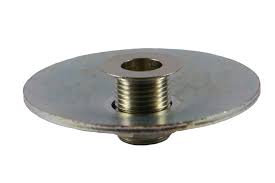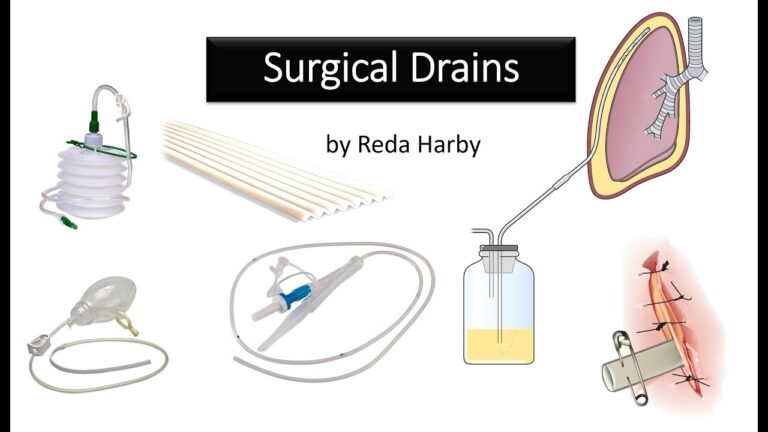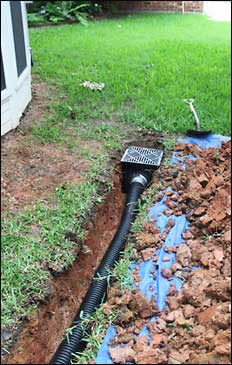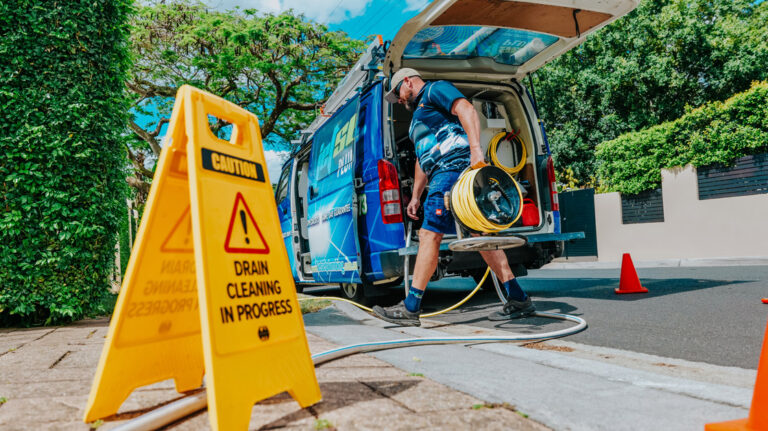What is a drain fitting?
In the world of plumbing, drain fittings are essential components that play a vital role in proper drainage systems. Whether you are dealing with a sink, bathtub, or toilet, drain fittings ensure that water and waste flow smoothly and efficiently down the drain. These fittings act as connectors between pipes, allowing for a secure and leak-free connection.
A drain fitting typically consists of various parts, including a drainpipe, trap, and strainer. The drainpipe carries the water or waste from the fixture, while the trap prevents sewer gases from entering your home. The strainer prevents larger objects from clogging the drain.
Types of drain fittings
Drain fittings come in various types to accommodate different plumbing fixtures and configurations. Let’s explore some of the most common types:
- P-trap: The P-trap is one of the most widely used drain fittings and is commonly found under sinks and washbasins. It is shaped like the letter “P” and is designed to trap water in its bend, creating a water seal that prevents sewer gases from entering your home. The P-trap is typically made of PVC or metal and is available in different sizes to fit various pipe diameters.
- S-trap: Similar to the P-trap, the S-trap is another common type of drain fitting used in plumbing. It is shaped like the letter “S” and is often found in older homes. The S-trap is less commonly used nowadays due to its potential for siphoning and the risk of losing the water seal. It is important to consult a professional plumber before installing an S-trap.
- Bottle trap: The bottle trap is a compact and space-saving drain fitting often used in vanity units and small washbasins. It is named after its distinctive bottle-shaped appearance, which allows it to fit in tight spaces. The bottle trap is easy to install and maintain, making it a popular choice for modern bathrooms.
- Floor drain: Floor drains are commonly found in basements, laundry rooms, and commercial spaces. They are designed to remove excess water and prevent flooding. Floor drains typically have a grate or cover to prevent debris from entering the drain system. They are often made of durable materials such as stainless steel or cast iron to withstand heavy usage.
- Shower drain: Shower drains are specifically designed for shower areas and are available in various shapes and sizes. Linear drains, point drains, and center drains are some common types of shower drains. They are designed to efficiently drain water from the shower floor while preventing hair and other debris from clogging the pipes.
- Toilet flange: The toilet flange is a crucial drain fitting that connects the toilet to the drainpipe. It provides a secure and leak-free connection, preventing water and waste from seeping out. Toilet flanges are typically made of PVC or cast iron, and they come in different sizes to fit various toilet models.
Common uses for drain fittings
Drain fittings serve a variety of purposes in plumbing systems. Here are some common uses:
- Waste removal: Drain fittings are responsible for carrying wastewater away from your fixtures and into the sewer or septic system. They ensure that waste is disposed of properly, preventing unsanitary conditions and foul odors in your home.
- Preventing sewer gases: The trap component of drain fittings is designed to create a water seal that prevents sewer gases from entering your home. These gases can be harmful to your health and can cause unpleasant odors. Properly installed drain fittings with functioning traps help maintain a safe and odor-free environment.
- Preventing clogs: Drain fittings, particularly those with strainers, help prevent larger objects from entering the drain system and causing clogs. Strainers capture debris such as hair, soap scum, and food particles, allowing water to flow freely while keeping the pipes clean and clear.
- Maintaining water pressure: Well-designed drain fittings ensure that water flows smoothly and without interruption. Proper water pressure is essential for a comfortable and functional plumbing system.
Importance of proper installation of drain fittings
Proper installation of drain fittings is crucial to ensure the functionality and longevity of your plumbing system. Here’s why it matters:
- Leak prevention: When drain fittings are installed correctly, they create a secure and leak-free connection between pipes. A properly installed drain fitting minimizes the risk of water damage and costly repairs due to leaks.
- Optimal water flow: Drain fittings that are installed at the correct angle and position allow for optimal water flow. This ensures that water and waste are efficiently carried away from fixtures and do not accumulate or cause blockages.
- Reduced maintenance: Well-installed drain fittings require less maintenance and are less likely to experience issues such as clogs or backups. By investing in proper installation, you can save time and money on future maintenance and repairs.
- Safety and compliance: Improperly installed drain fittings can lead to code violations and safety hazards. By following proper installation guidelines and consulting with a professional plumber if needed, you can ensure that your plumbing system meets safety standards and regulations.
Factors to consider when choosing drain fittings
When selecting drain fittings for your plumbing needs, several factors should be taken into consideration:
- Fixture type: Different fixtures require specific types of drain fittings. For example, a sink may require a P-trap, while a shower may require a shower drain. Ensure that you choose the correct fitting for the specific fixture you are working with.
- Pipe size: The diameter of the drainpipe should match the size of the drain fitting. Choosing the right size ensures a proper fit and optimal water flow. Consult the manufacturer’s specifications or seek professional advice if you are unsure about the correct pipe size.
- Material: Drain fittings are available in various materials, including PVC, stainless steel, and brass. Consider the durability, compatibility with your existing plumbing system, and budget when selecting the material for your drain fittings.
- Installation ease: Some drain fittings are easier to install than others. If you are planning a DIY installation, consider fittings that come with clear instructions and require minimal tools and expertise. For complex installations or if you are unsure about your plumbing skills, it is advisable to hire a professional plumber.
- Budget: Drain fittings come in a range of prices, and it is important to consider your budget when making a selection. While it may be tempting to opt for cheaper options, prioritize quality and durability to avoid future issues and costly repairs.
How to select the right drain fitting for your needs
Choosing the right drain fitting can seem overwhelming, but with a few simple steps, you can ensure a proper fit and optimal functionality:
- Identify the fixture: Determine the type of fixture you are working with, whether it’s a sink, bathtub, shower, or toilet. Each fixture may require a specific type of drain fitting.
- Measure the pipe diameter: Measure the diameter of the drainpipe to ensure a proper fit. Use a measuring tape or consult the manufacturer’s specifications to determine the correct size.
- Research options: Research different types of drain fittings available for your specific fixture and pipe size. Consider factors such as material, ease of installation, and compatibility with your existing plumbing system.
- Read reviews: Look for customer reviews and ratings of the drain fittings you are considering. This can provide valuable insights into the quality, durability, and performance of the fittings.
- Consult a professional: If you are unsure about the selection or installation process, it is advisable to consult a professional plumber. They can provide expert advice and ensure that you choose the right drain fitting for your needs.
DIY installation of drain fittings
If you have some plumbing experience and feel confident in your skills, you may consider installing drain fittings yourself. Here are some general steps to follow:
- Gather the necessary tools: Before starting the installation, gather all the required tools, including a wrench, plumber’s tape, and a hacksaw (if needed).
- Shut off the water supply: Turn off the water supply to the fixture you are working on. This will prevent any water flow during the installation process.
- Remove the old fitting: If you are replacing an existing drain fitting, carefully remove the old fitting using a wrench. Be cautious not to damage the surrounding pipes or fixtures.
- Clean the area: Clean the area where the new fitting will be installed. Ensure that there are no debris or obstructions that could affect the proper installation.
- Apply plumber’s tape: Wrap plumber’s tape around the threaded areas of the drain fitting. This helps create a watertight seal and prevents leaks.
- Install the new fitting: Insert the new drain fitting into the appropriate opening and hand-tighten it. Use a wrench to securely tighten the fitting, ensuring a leak-free connection.
- Test for leaks: Once the fitting is installed, turn on the water supply and check for any leaks. If you notice any leaks, tighten the fitting further or consult a professional plumber for assistance.

Hiring a professional plumber for drain fitting installation
While DIY installation can be a cost-effective option, certain situations may require the expertise of a professional plumber:
- Complex installations: If the installation involves intricate plumbing configurations or requires additional modifications, it is best to hire a professional plumber.
- Inexperience or lack of confidence: If you are not familiar with plumbing systems or lack confidence in your skills, it is advisable to hire a professional plumber. They have the knowledge and experience to ensure a proper installation and avoid potential issues.
- Time constraints: If you are short on time or prefer to delegate the task to an expert, hiring a professional plumber can save you time and effort.
- Code compliance: A professional plumber can ensure that the installation meets local building codes and regulations. This is particularly important for new construction or major renovations.
Maintenance and care of drain fittings
To ensure the longevity and optimal performance of your drain fittings, regular maintenance and care are essential. Here are a few tips:
- Keep drains clean: Avoid pouring substances that can cause clogs, such as grease, oil, or coffee grounds, down the drain. Use drain covers or strainers to catch hair and larger debris.
- Regular cleaning: Clean drain fittings periodically to remove any buildup or residue. Use a mild detergent or a mixture of vinegar and baking soda to clean the fittings.
- Inspect for leaks: Regularly inspect drain fittings for any signs of leaks or water damage. If you notice any issues, address them promptly to prevent further damage.
- Avoid harsh chemicals: Harsh chemicals can damage drain fittings and pipes. Use natural or enzyme-based drain cleaners instead of chemical-based products.
- Professional maintenance: Consider scheduling regular maintenance visits with a professional plumber to inspect and clean your drain fittings. They can identify any potential issues and perform necessary repairs or replacements.
What is the purpose of a drain fitting in plumbing?
A drain fitting is designed to connect various plumbing components and create a secure pathway for wastewater to flow away from sinks, showers, and appliances. It serves as a vital component in ensuring proper drainage within a plumbing system.
Are drain fittings and pipe connectors the same thing?
While drain fittings are often used as pipe connectors, they can also include components like P-traps and elbow joints. These fittings play a crucial role in redirecting and maintaining the flow of water within a plumbing system, ensuring it operates efficiently.
Can drain fittings prevent clogs or blockages in a plumbing system?
Drain fittings themselves do not prevent clogs or blockages, but they are part of a well-designed plumbing system that can minimize the risk of blockages. Using appropriate fittings and maintaining them properly can help ensure efficient wastewater flow, reducing the chances of cl
Conclusion
Properly installed drain fittings are crucial for the functionality and efficiency of your plumbing system. Whether you are dealing with a sink, bathtub, or toilet, choosing the right drain fitting ensures optimal water flow, prevents clogs, and maintains a safe and odor-free environment. By considering factors such as the fixture type, pipe size, material, and installation ease, you can select the right drain fitting for your needs. Whether you decide to install the fittings yourself or hire a professional plumber, regular maintenance and care are essential to keep your drain fittings in good condition. By following these guidelines, you can ensure that your plumbing system performs at its best and enjoy a hassle-free drainage experience.









